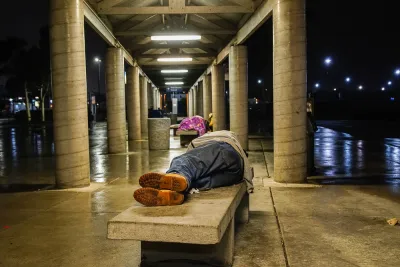Assessing the scale of homelessness in the United States is surprisingly difficult, with statistics failing to capture the diversity of unhoused people and their situations.

An exact figure for how many people are experiencing homelessness in the United States is hard to come by, writes the New York Times editorial board, making it difficult to define the scope of the problem and identify the areas of highest need. "The federal estimate relies on local one-night-only head counts of the homeless population, conducted at the end of January, that seem almost designed to produce an undercount." The current federal system, the authors argue, fails to collect accurate and uniform data. "In 2017, for example, the government put the total homeless population at 550,996. That same year, school districts across the country, using a broader definition, reported 1.35 million homeless students, according to the most recent data from the National Center for Education Statistics. That number, it bears emphasizing, is just a count of homeless students — not their parents or other family members, and not the rest of the homeless population." Such discrepancies point to deeply inaccurate methods and a lack of uniformity in homeless counts across the country.
Some localities, like California's rural Kern County, have adopted "a new, data-driven approach to making homelessness rare, brief and nonrecurring." According to the editorial, "it seems to be working." Earlier this year, Bakersfield announced it had effectively eliminated chronic homelessness in the city. Ending homelessness requires a variety of resources, but accurate information is an important first step, as "better data allows cities to make better use of existing resources."
FULL STORY: How Many Americans Are Homeless? No One Knows

Analysis: Cybertruck Fatality Rate Far Exceeds That of Ford Pinto
The Tesla Cybertruck was recalled seven times last year.

National Parks Layoffs Will Cause Communities to Lose Billions
Thousands of essential park workers were laid off this week, just before the busy spring break season.

Retro-silient?: America’s First “Eco-burb,” The Woodlands Turns 50
A master-planned community north of Houston offers lessons on green infrastructure and resilient design, but falls short of its founder’s lofty affordability and walkability goals.

Test News Post 1
This is a summary

Analysis: Cybertruck Fatality Rate Far Exceeds That of Ford Pinto
The Tesla Cybertruck was recalled seven times last year.

Test News Headline 46
Test for the image on the front page.
Urban Design for Planners 1: Software Tools
This six-course series explores essential urban design concepts using open source software and equips planners with the tools they need to participate fully in the urban design process.
Planning for Universal Design
Learn the tools for implementing Universal Design in planning regulations.
EMC Planning Group, Inc.
Planetizen
Planetizen
Mpact (formerly Rail~Volution)
Great Falls Development Authority, Inc.
HUDs Office of Policy Development and Research
NYU Wagner Graduate School of Public Service




























